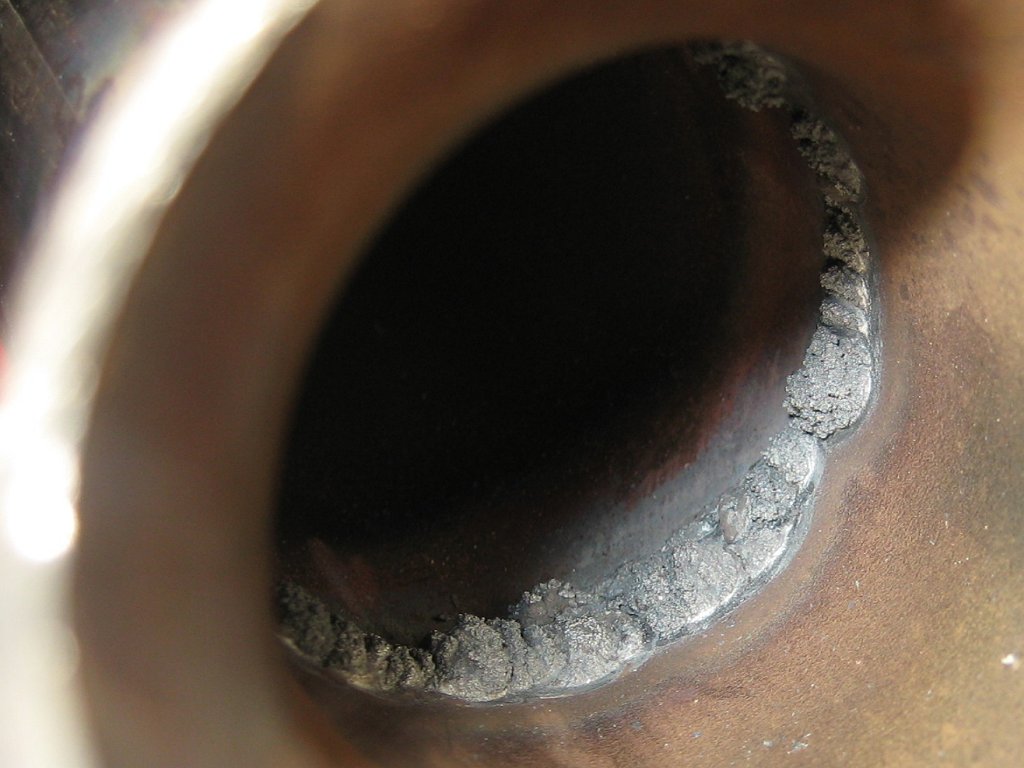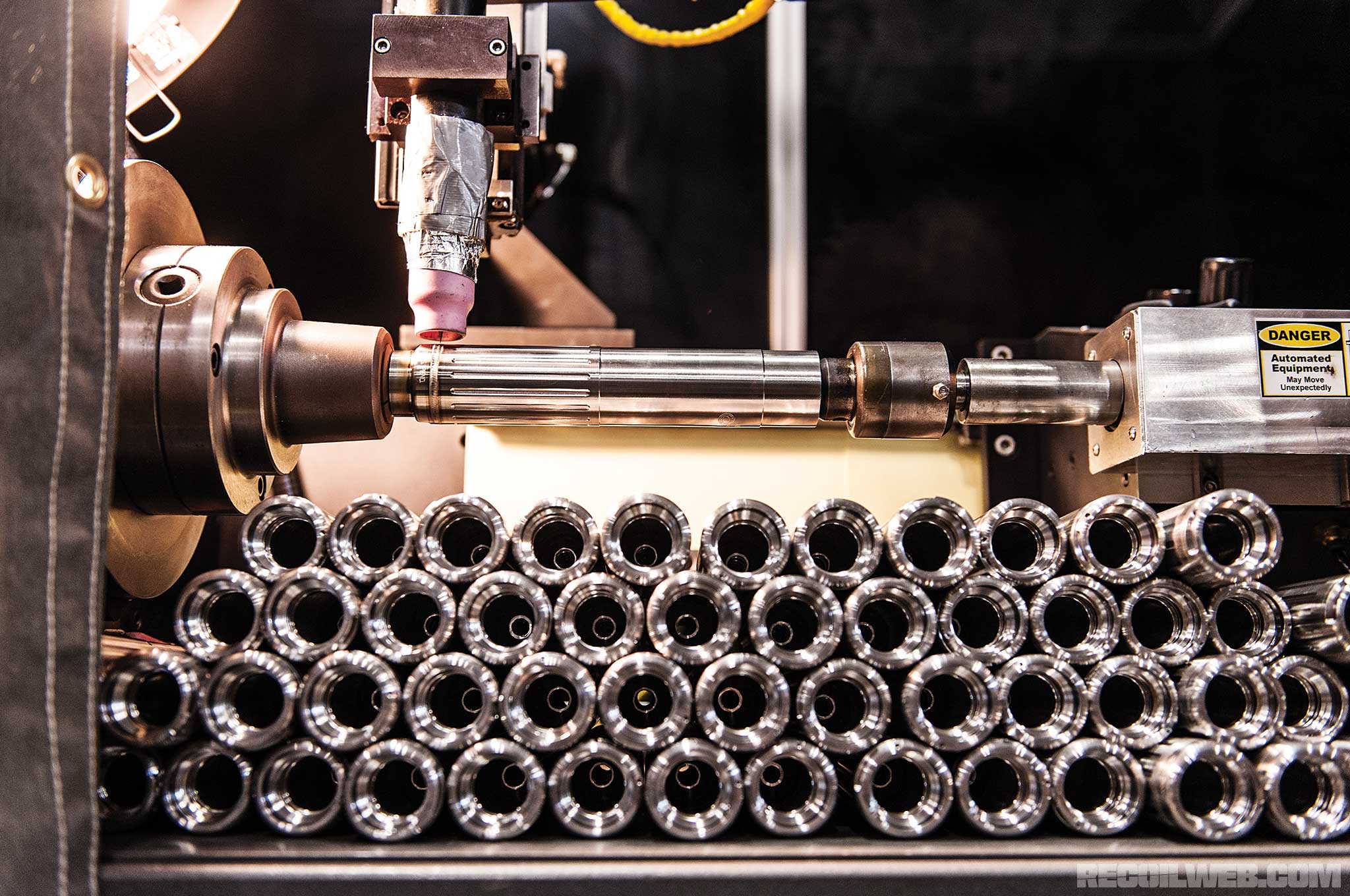Two ways to do it, I'd avoid hand weld. Tacking by hand is ok though.
It's either done on a lathe inside an argon filled chamber or an orbital welder.
Be prepared to have many extra cones for scrap, it takes quite bit of trail and error to figure out the correct machine setup.
When weld Stainless, they need to be pack purged with Argon shielding gas. Problem for silencers, unlike straight pipe or box, it can easily trap air(Oxygen and Nitrogen and H20 vapor) on the inside.
The outside of the weld can be perfect, but it may cause carbide precipitation on the back side of the weld, aka Sugaring(looks like black burnt sugar) which is absolutely cancer for welds.

Water can cause hydrogen embrittlement stainless steel, too.
https://en.wikipedia.org/wiki/Hydrogen_embrittlement
Normally when we do this type of small, complicated shaped works, it's put in a vacuum chamber, have all the air sucked out, then refill with argon.

If you are a manufacturing plant does it everyday, you may setup differently on a custom rig to have purge gas going through a lathe via sealed fittings, but for one off deal, probably not gonna be worth it.
I'm almost certain there won't be any filler wire involved, all pulsed autogenous robotic welding. It looks simple to weld it by hand, it actually a very complex process happens very quickly. Speed, feed, pulse rate, on time, off time, different welding current, taper off, so on and on. There are some very few humans can beat the consistency of the robots, I'd bet they are all work on the nuclear side of business, you won't afford any of them.
Stainless is a very poor heat conductor, the welding heat is trapped locally around the seam and causing a lot of warp. So proper alignment is gonna be critical.

 Win a FREE Membership!
Win a FREE Membership!